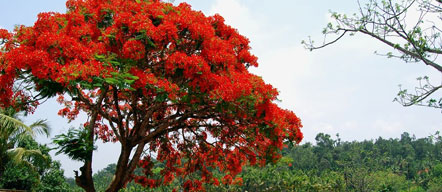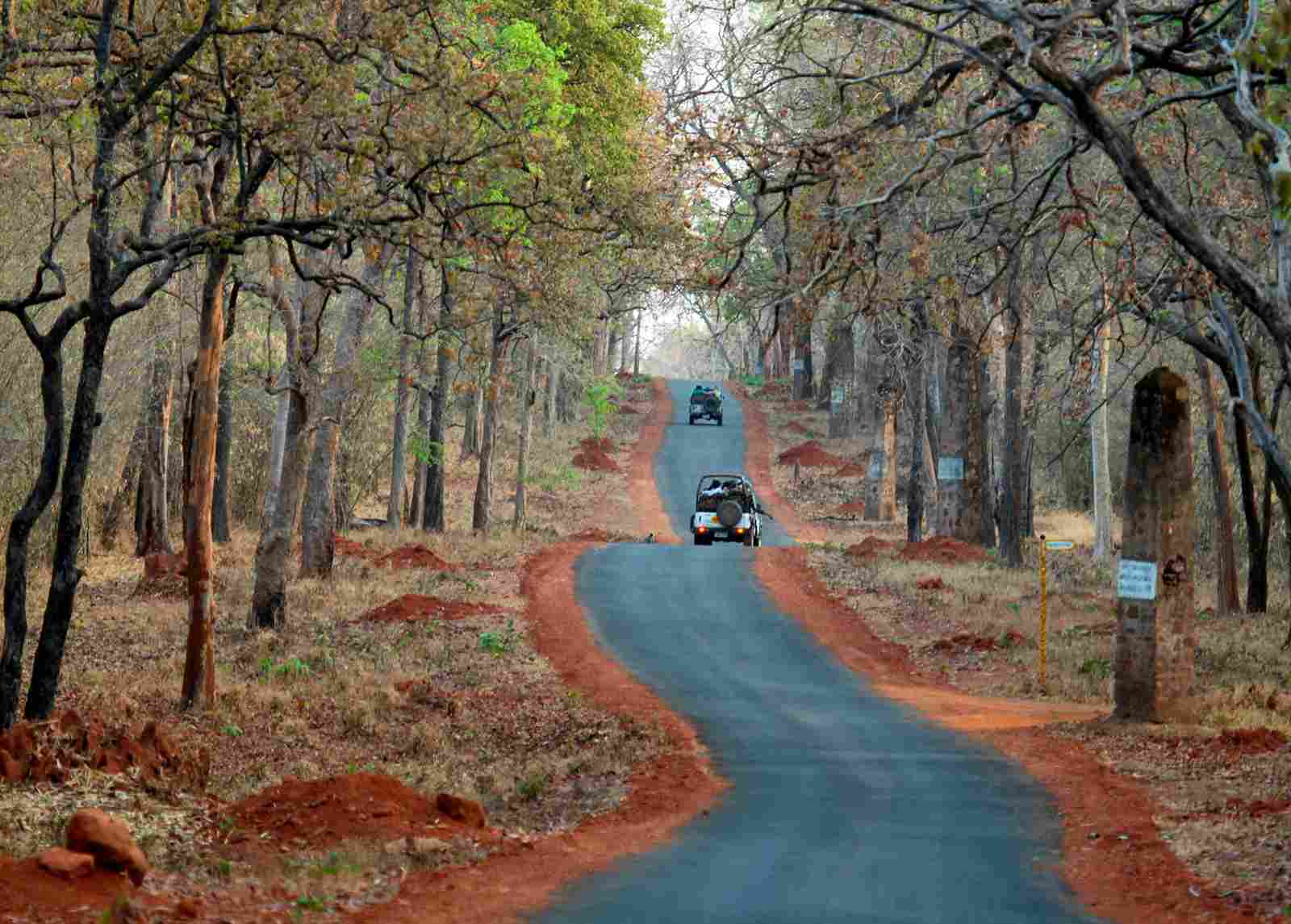The Magical Green Flora of Tadoba
When you go for a gypsy safari in Tadoba National Park, the first thing you’ll notice is the natural scent of earth and trees. The forest of Tadba is home to an incredible variety of plants and trees. These flora species bring this jungle to life. This park covers a huge area of Maharashtra and has rich and diverse plant life. From the tall trees to the tiny herbs, this forest has everything for the animals living inside it. It’s a must-visit destination for nature lovers. Let’s know about the special flora of Tadoba
Trees
This park is blessed by God for having a wide range of tree species. The forest type here is tropical dry deciduous, and most of the trees shed their leaves in the dry season here. But, even in the driest months, the forest remains beautifully alive because of the mix of trees it has. The major tree species that are found in Tadoba are Teak, Ain, Bamboo, Bija, Dhaoda, Haldu, Salai, Semal, and Tendu. Out of these, the most dominant tree here is timber. The teak trees are long and strong, they work as the backbone of the forest cover of this Tadoba National Park. Other than this, the other tree that would be seen everywhere will be Bamboo. This tree covers around 40% of the park’s area and is perfect for hideous (elusive) animals like leopards.
Other than these two, different zones have different trees. Near water bodies like lakes, streams, and rivers, one can find trees like Mango, Jamun, and Arjun. These trees attract the birds and give shelter and shade to many animals. If you go near the water areas, then you can find these trees, and in that area, you can enjoy a delightful smelling safari experience. All the trees of this park, including Bija, Dhaoda, Haldu, Salai, Semal, and Tendu, are either used by the locals for traditional medicines or they support the diet of animals and birds.


667 Flowering Beauties
The flora of Tadoba also includes an impressive 667 species of flowering plants. From the tiny ground-cover blooms to large flowering trees, this park looks amazing with beautiful flowering species. One should definitely come here to enjoy this beauty during the monsoon and early winter months.
When you go for a safari in Tadoba National Park, you might spot wildflowers looking beautiful in open areas, or you can also see the colorful creepers climbing on rocks and tree trunks. These flowering plants attract butterflies, bees, and birds, and Tadoba becomes a beautiful spot for nature lovers during the winter season or the monsoons. One should definitely visit the park to capture some nice shots.
In all, the trees offer shade and shelter, flowers provide nectar, and bamboo thickets act as a safe corridor for tigers, deer, and even sloth bears. Each flora of Tadoba is important for maintaining the natural balance.
Wild Fauna of Tadoba National Park
Tadoba National Park is the best place to visit for wildlife lovers because here, the powerful Bengal tiger rules. Every safari in Tadoba National Park feels like a true adventure because of the wildlife sightings it offers. Tadoba always gives a different safari experience. Sometimes, one can track the tiger through the tall grass. On the other hand, one can see the herd of deer crossing your path, or people just wait quietly when the golden eyes of leopards peek through the leaves. Every safari in Tadoba offers a unique experience of wildlife sightings in this huge forest. Let’s know about the incredible fauna of Tadoba National Park:
The Ferocious Bengal Tigers
Tadoba National Park is known as the land of tigers among wildlife enthusiasts because of the number of sightings it offers. With 115 tigers living here, this park is one of the best places in India to spot these majestic big cats. In fact, it’s not uncommon to see a tiger crossing your safari path, chilling near a watering hole, or even resting in the shade. Especially the morning safaris offer the best sightings of tigers. In the morning, you can see tigers yawning or just stretching lazily as they slowly wake up. You can even catch them hunting because that’s the time when tigers are more active.
Other Predators
The tigers are not only the big players in this huge Tadoba National Park. You can even see leopards here, which are often spotted hiding between the bushes, or you can spot them on top of the trees. Leopards are elusive animals, and if you spot them by luck, then it’s a real treat for you.
Other than them, the wild dogs, known as dholes, can also be seen here. These are fearless and fast animals, and most of the time move in packs. The wild dogs are skilled hunters and are a rare sight in many parks, but Tadoba gives you a good chance to see them in real life with your own eyes.
The tourists can also spot striped hyenas, which are rare to be spotted. These are nocturnal animals and not easily seen. But, in Tadoba, they can be spotted during the early morning rides very easily.


Gentle Giants & Forest Friends
Not all the fauna of Tadoba National Park are hunters. This park is also home to some gentle animals that are herbivores, such as Sloth Bears, Indian Gaurs, Sambar Deer, or Chital Deer. Sloth bears can be spotted digging in the earth or walking slowly in the forest. On the other hand, you can spot the gaurs at a distance from time to time. They can be spotted easily in Tadoba National Park. And, deer are commonly seen near the water holes or open grassland areas during the thrilling safari in Tadoba National Park. Also, deer are a natural alarm; whenever a tiger or any big predator is near, then deer make noises, and one might catch a tiger chasing a deer.
Birds, Reptiles & More
The fauna of Tadoba National Park also includes birds and reptiles. This park is home to over 280 species of birds, and you can see them sitting in the trees or flying in the sky. This park has beautiful birds like kingfishers, and you can even see the dancing peacocks here. If you enjoy photography, then let us tell you that you can take amazing shots of a peacock spreading its feathers in this park.
And let’s not forget the reptiles and amphibians. Tadoba is home to 54 species of reptiles and 11 species of amphibians. The park always remains filled with snakes and tiny frogs, especially near the water bodies. Each reptile or amphibian plays an important role in the park’s ecosystem. Even the lakes and streams are full of life, with 84 species of fish adding to the rich biodiversity of the park.